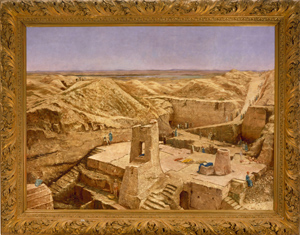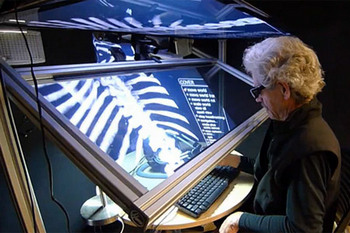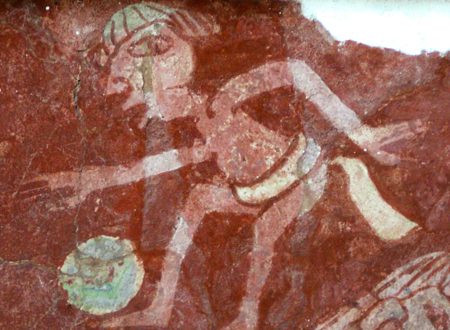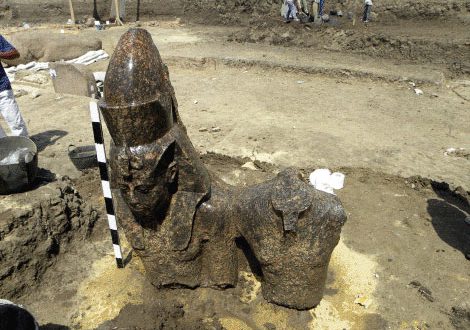 In the 1880s, a time of great opportunities and great adventures, the University of Pennsylvania Museum organized America’s first archaeological expedition to the ancient Near East – to Nippur, a promising but far-flung Mesopotamian site then within the vast Ottoman Empire, now located in Iraq to the south of Baghdad. Nearly 130 years and 400 archaeological and anthropological expeditions later, the museum returns to ‘the Age of Exploration’ and their first Near Eastdig with the exhibition’Archaeologists and Travelers in Ottoman Lands’ (September 2010 to February 2011).
In the 1880s, a time of great opportunities and great adventures, the University of Pennsylvania Museum organized America’s first archaeological expedition to the ancient Near East – to Nippur, a promising but far-flung Mesopotamian site then within the vast Ottoman Empire, now located in Iraq to the south of Baghdad. Nearly 130 years and 400 archaeological and anthropological expeditions later, the museum returns to ‘the Age of Exploration’ and their first Near Eastdig with the exhibition’Archaeologists and Travelers in Ottoman Lands’ (September 2010 to February 2011).
‘Archaeologists and Travelers in Ottoman Lands’ offers a gimps at the accomplishments, struggles, and fortunes of three adventurers whose lives intersected at Nippur: Osman Hamdi Bey, archaeologist, Director of the Imperial Ottoman Museum, and internationally renowned Turkish painter; John Henry Haynes, American archaeologist and photographer; and Hermann Vollrath Hilprecht, a German archaeologist, Assyriologist, and professor at Penn. The year 2010 marks the centennial of the deaths of Hamdi Bey and Haynes, and the demise of Hilprecht’s career due to scandal after he was accused of tampering with cuneiform inscriptions and withholding the finest discoveries for his personal collection. (Read up about the scandalin this excellent 1910 New York Times article about a dispute that continuously involves more and more persons, who originally had nothing to do with it. )
The Penn Museum’s exhibition sheds light on some of the late 19th century’s diplomatic obstacles and opportunities for ambitious archaeologists seeking to establish excavations in distant lands. As one of the most ancient Sumerian cities, Nippur was a prime choice for a major excavation, but it also posed major challenges. Located in the hard-to-reach marshes of southern Mesopotamia, the site offered a harsh climate, and was surrounded by warring tribes.

Despite these, over the course of years, the excavations at Nippur provided archaeologists with a wealth of new information, and a trove of artefacts, including more than 30,000 cuneiform tablets, among them the largest collection of Sumerian literary tablets ever found. The cuneiform tablets formed the basis of the Penn Museum’s Babylonian Tablet Room and collection. Today, scholars continue to draw upon this vast core of material to develop an online dictionary of Sumerian, through the ongoing Pennsylvania Sumerian Dictionary Project.
‘Archaeologists and Travelers in Ottoman Lands’ features two 19th century oil paintings by Osman Hamdi Bey: Excavations at Nippur, which has never before been on public exhibition, and At the Mosque Door. Also on display are about 50 photographs, many by Haynes, whose contributions as an archaeological photographer are only now being recognized, and more than 40 artefacts from the Nippur expedition (1889-1900), including a full-sized “slipper” coffin, incantation bowls (inscribed with spells to perform protective magic), figurines, and numerous clay cuneiform tablets bearing some of the earliest writing in the world.
Archaeologists and Travelers in Ottoman Lands opensSunday, September 26, 2010 and running through February 6, 2011 at the University of Pennsylvania Museum of Archaeology and Anthropology. Admissionis $10 for adults; $7 for senior citizens (65 and above); $6 children (6 to 17) and full-time students with ID. Amission is free to Members, Penncard holders, and children 5 and younger.





